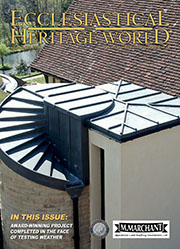An introduction to the Mastic Asphalt Council (MAC)
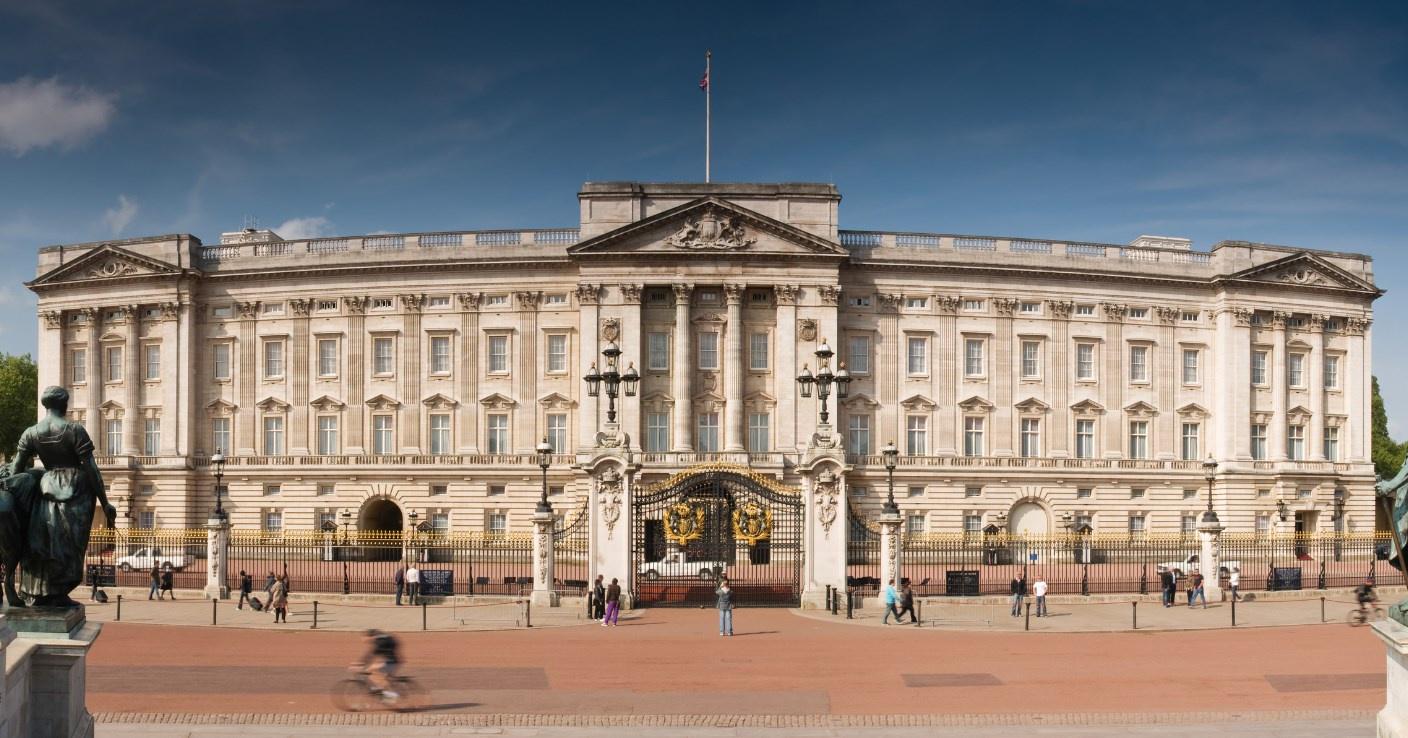 The Mastic Asphalt Council (MAC) is the trade association for the UK mastic asphalt industry. MAC represents more than 90 companies - including mastic asphalt manufacturers, the contractors responsible for its installation, and associated suppliers of equipment and services.
The Mastic Asphalt Council (MAC) is the trade association for the UK mastic asphalt industry. MAC represents more than 90 companies - including mastic asphalt manufacturers, the contractors responsible for its installation, and associated suppliers of equipment and services.
Top quality products, design and workmanship are fundamental to the Mastic Asphalt Council. MAC membership is only open to those manufacturers and contractors that can satisfy the stringent quality requirements. These strict membership requirements enable MAC to justifiably claim that it represents the UK’s top 70 mastic asphalt contractors, as well as leading manufacturers.
Only MAC members can use the MAC logo as a mark of quality and all mastic asphalt sold in the UK by MAC’s manufacturing members is produced in the UK and not imported.
MAC Director Malcolm Grinstead said: “As a non-profit making independent body, our primary objective is to promote the use of mastic asphalt and to regulate the quality and workmanship standards for its installation.
 “In recent years, there has also been a resurgence of popularity of mastic asphalt amongst the specification market for roofing, flooring, paving and tanking projects. We provide a technical information service to architects, surveyors and other specifiers, on the design of all types of mastic asphalt installation. As part of this, we produce a series of Technical Guides which can be readily downloaded from www.masticasphaltcouncil.co.uk.”
“In recent years, there has also been a resurgence of popularity of mastic asphalt amongst the specification market for roofing, flooring, paving and tanking projects. We provide a technical information service to architects, surveyors and other specifiers, on the design of all types of mastic asphalt installation. As part of this, we produce a series of Technical Guides which can be readily downloaded from www.masticasphaltcouncil.co.uk.”
Mastic asphalt is one of the few construction activities still regarded as a ‘craft trade’ and there are many time-served mastic asphalt roofing applicators working across the country. The skilled work involves ensuring that asphalt is at the correct temperature, and then spreading it using traditional techniques to coat the surface. A thermoplastic material that changes shape when heated, mastic asphalt cures to form a hard, durable, finished product to suit all applications of mastic asphalt.
As mastic asphalt is laid in molten form, it is often confused with other types of waterproofing membrane that require naked flame or torch on application. In reality, there is no naked flame at the point of installation and because mastic asphalt is so highly flame resistant, there is little or no potential of fire risk.
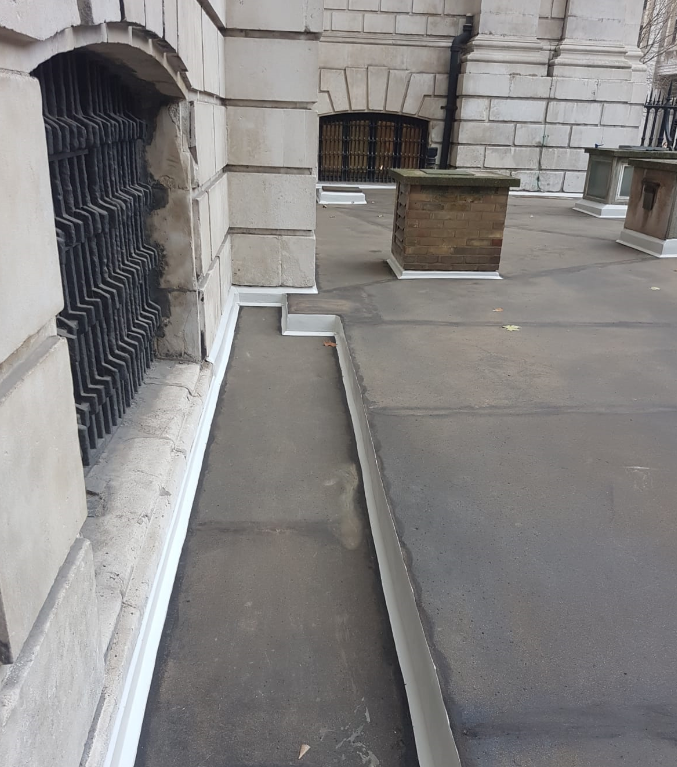 The high mineral content of mastic asphalt renders it virtually incombustible. Mastic asphalt achieves EXT.F.AA fire rating to BS 476: Part 3 and BroofT4 according to BS EN 13501-5. No significant spread of flame was observed and no flame penetration occurred.
The high mineral content of mastic asphalt renders it virtually incombustible. Mastic asphalt achieves EXT.F.AA fire rating to BS 476: Part 3 and BroofT4 according to BS EN 13501-5. No significant spread of flame was observed and no flame penetration occurred.
Back in 2008, the Mastic Asphalt Council made history as the first industry in the world to achieve the CarbonZero standard. Since then mastic asphalt has offset thousands of tonnes of carbon dioxide - underlining its status as a green waterproofing material.
Although mastic asphalt is typically known for its durability, it is increasingly being specified for roofing projects where green credentials are taken into consideration. When mastic asphalt has reached the end of its useful life, it can be recycled or used as roof screed. The Building Research Establishment (BRE) has officially stated that asphalt roofing is capable of lasting 50-60 years, but MAC has many examples well in excess of this. For instance, mastic asphalt was first laid at London’s St Paul’s Cathedral in 1906 and it provided well over 100 years’ of effective waterproofing before it needed replacement.
 The heritage market is a key sector for the industry and mastic asphalt is frequently specified by the National Trust and English Heritage, as well as other public and private owners of prestigious buildings for refurbishment projects. Buckingham Palace is testament to the longevity of mastic asphalt. On top of the Royal household is a rooftop of mastic asphalt that has kept the building dry for well over 80 years. Other heritage applications include the Tower of London, Tower Bridge and Edinburgh Castle.
The heritage market is a key sector for the industry and mastic asphalt is frequently specified by the National Trust and English Heritage, as well as other public and private owners of prestigious buildings for refurbishment projects. Buckingham Palace is testament to the longevity of mastic asphalt. On top of the Royal household is a rooftop of mastic asphalt that has kept the building dry for well over 80 years. Other heritage applications include the Tower of London, Tower Bridge and Edinburgh Castle.
MAC contractor member Sussex Asphalte recently featured in the National Federation of Roofing Contractors (NFRC) Guidance Note 33 on Zero Avoidable Waste in Construction which references the company’s refurbishment project at St Paul’s Cathedral.
St Paul’s Cathedral, with its world famous dome, is an iconic feature of the London skyline. The largest Cathedral in England, it is the masterpiece of Britain's most famous architect Sir Christopher Wren. Mastic asphalt was first laid in 1906 on the Stone Gallery that circles the Cathedral dome and it provided a remarkable 111 years’ weatherproof protection before it required refurbishment by Sussex Asphalte.
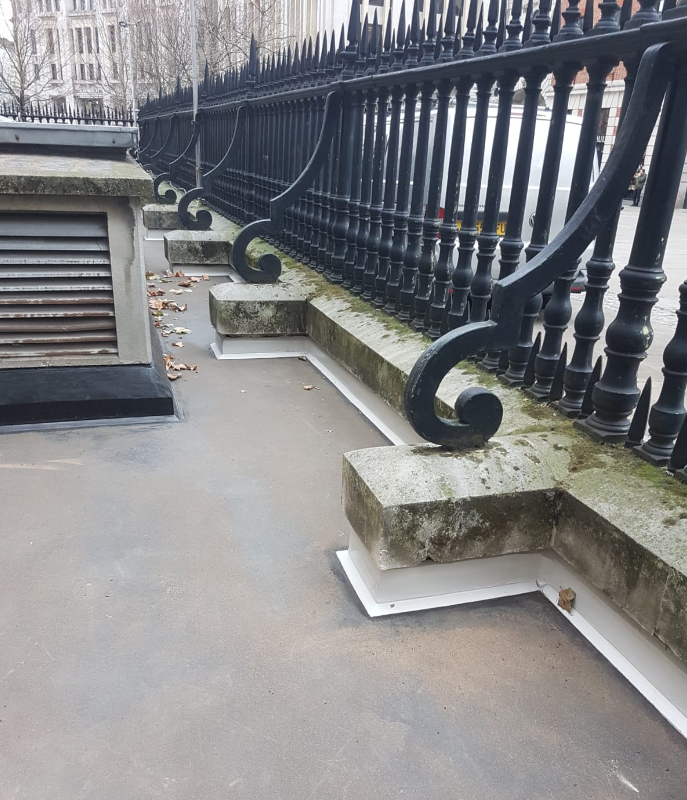 When the mastic asphalt on the Stone Gallery was renewed, approximately 20 tonnes of the original mastic asphalt was saved and stored on-site to allow it to be re-used again in the future. Just nine months later it was re-melted, sieved and used again by Sussex Asphalte for a further mastic asphalt waterproofing project at St Paul’s Cathedral - this time on the North Courtyard. The underlying workshops and storage facilities were affected by water ingress, so it was necessary to waterproof the 500m2 area, again with mastic asphalt.
When the mastic asphalt on the Stone Gallery was renewed, approximately 20 tonnes of the original mastic asphalt was saved and stored on-site to allow it to be re-used again in the future. Just nine months later it was re-melted, sieved and used again by Sussex Asphalte for a further mastic asphalt waterproofing project at St Paul’s Cathedral - this time on the North Courtyard. The underlying workshops and storage facilities were affected by water ingress, so it was necessary to waterproof the 500m2 area, again with mastic asphalt.
The recycled mastic asphalt was used as the first layer of waterproofing to the North Courtyard. This then had a 15mm recreational duty top coat of mastic asphalt with added granite applied. The tight, intricate nature of the courtyard with numerous protrusions, lights, upstands, changes in height and directions created a challenge to ensure all falls were adequate and that there was no ponded water, as this is a busy storage yard for the Cathedral. Furthermore, the existing asphalt was difficult to remove and the awkward nature of the space made it challenging to ensure straight lines and high quality workmanship.
Where previous design details were not adequate, Sussex Asphalte - in conjunction with the Clerk of Works at St Paul’s Cathedral - raised upstand heights and improved falls to ensure there was no ponding.
The project was carried out in the winter months and operatives had to contend with adverse weather and plummeting temperatures, maintaining watertight areas at all times to enable works to continue below unhindered. Disruption was kept to an absolute minimum and despite the testing weather conditions and busy nature of the site, the project was delivered a week early with a saving of £11,000 for the client.
This is a superb example of mastic asphalt once again being used on one of the UK’s most iconic heritage structures and being recycled to conserve this important building. Not only has mastic asphalt provided 111 years’ of weatherproof protection on the Stone Gallery, but it has also been re-used again for the application on the North Courtyard, confirming its durability, performance and environmental credentials. The installation on the North Courtyard was carried out in accordance with BS 8212:1998 and the same high level of workmanship as the Stone Gallery project. Through excellent project management, works were completed ahead of schedule.
 Another impressive heritage project has been completed at the Church of St Mary and All Saints in Fotheringhay, Peterborough - a 15th century, Grade I listed building which was the winner of the MAC Challenge Trophy Award back in 2018.
Another impressive heritage project has been completed at the Church of St Mary and All Saints in Fotheringhay, Peterborough - a 15th century, Grade I listed building which was the winner of the MAC Challenge Trophy Award back in 2018.
Carried out by MAC contractor BCC Asphalt during one of the coldest winters on record, the project was fully completed within just 14 days. The church is situated at the top of a hill and the roofing applicators had to contend with extreme wind and very cold temperatures. Wind circled around the church from morning till night and it was an awkward application with severely restricted access, and not much room for the mastic asphalt roofers to manoeuvre in.
 Due to restricted access, the roof had never been maintained since the church was first constructed and the natural stone and concrete substrate were allowing damp and water to penetrate into building. Urgent repairs were required to the roof to prevent further water infiltration. Over the years, moss had collected in the joints of the concrete on the roof and the concrete was severely water stained and absorbing water.
Due to restricted access, the roof had never been maintained since the church was first constructed and the natural stone and concrete substrate were allowing damp and water to penetrate into building. Urgent repairs were required to the roof to prevent further water infiltration. Over the years, moss had collected in the joints of the concrete on the roof and the concrete was severely water stained and absorbing water.
Four operatives from BCC Asphalt were involved in the roof refurbishment and the only access to the roof for the duration of the contract was two material hoists set in two stages of the scaffolding. One operative was on the ground mixing the mastic asphalt and hoisting it up to the first 50ft gantry and the material was then hoisted up to the second access point which was approximately 100ft up at the top of the church tower.
 Once repairs to the stonework were completed and the existing surface had been cleaned and primed, sheathing felt was installed before two coats of a specially formulated mastic asphalt roofing system were applied. Mastic asphalt was applied at a thickness of 20mm in two coats to existing falls including the church’s perimeter gutter. Two coats of mastic asphalt were also applied at 13mm to the skirting of the stonework, before being painted with solar reflective paint.
Once repairs to the stonework were completed and the existing surface had been cleaned and primed, sheathing felt was installed before two coats of a specially formulated mastic asphalt roofing system were applied. Mastic asphalt was applied at a thickness of 20mm in two coats to existing falls including the church’s perimeter gutter. Two coats of mastic asphalt were also applied at 13mm to the skirting of the stonework, before being painted with solar reflective paint.
The building was kept watertight as works progressed and different contours and curves of gutters were expertly matched using mastic asphalt. Due to the tight access to the asphalt gutters, it was extremely challenging for BCC Asphalt to lay the asphalt skirting and complete the detail work.
For further information about the Mastic Asphalt Council, please contact Malcolm Grinstead on 01273 242778, email This email address is being protected from spambots. You need JavaScript enabled to view it. or visit www.masticasphaltcouncil.co.uk
You can find a selection of MAC members offering services to the sector in the online directory here.
Mastic asphalt used to restore historic Glasgow landmark to its former glory
Camphill Gate is a five-storey tenement building, designed in an art nouveau style and located on the edge of Queens Park, in the Southside of Glasgow. The category B listed building houses 24 residential apartments and is home to 12 businesses.
Click here to read the full story.
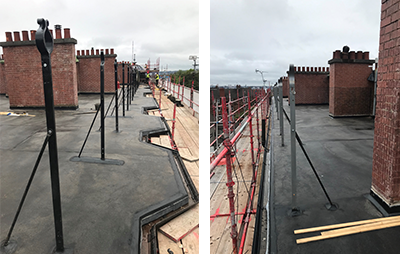
Award-winning project proves the value of mastic asphalt
Back in 2018 an impressive roof refurbishment project was completed at the Church of St Mary and All Saints in Fotheringhay, Peterborough – a magnificent 15th-century, Grade One-listed building.
The project was carried out during one of the coldest winters on record by contractors BCC Asphalt – who are members of the Mastic Asphalt Council (MAC) – and was completed in just 14 days. The project was named the winner of the Challenge Trophy Award in the MAC 2018 Awards, presented at the Royal Horseguards Hotel in London.
Click here to read the full story.
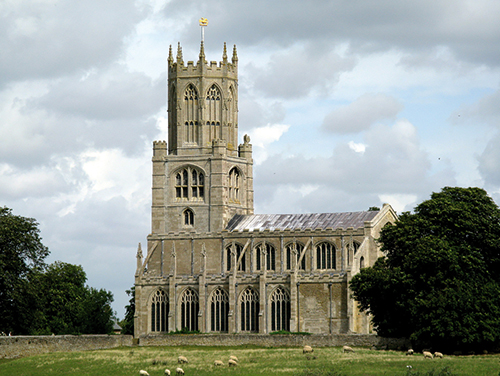
New roof restores brutalist masterpiece – and rectifies design flaw
A major roofing and cladding project – using traditional mastic asphalt and leadwork – was carried out over the whole of last year at St Antony’s College, Oxford, by leading industry experts SPV Group. The project, at the Hilda Besse Building, was completed as part of a larger scale refurbishment project – working in conjunction with CBRE Construction.
Click here to read the full story.
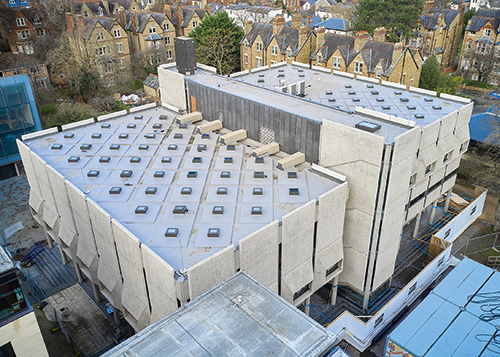
Asphalt repairs at St Hugh's Monastery
St Hugh’s Monastery was experiencing water ingress into its cloister area as a result of damage and cracks in the northeast asphalt balcony roof above the cloisters. Asphalt repairs were undertaken to the balcony roof and the repaired section was painted with solar reflective paint.
Click here to read the full story.










